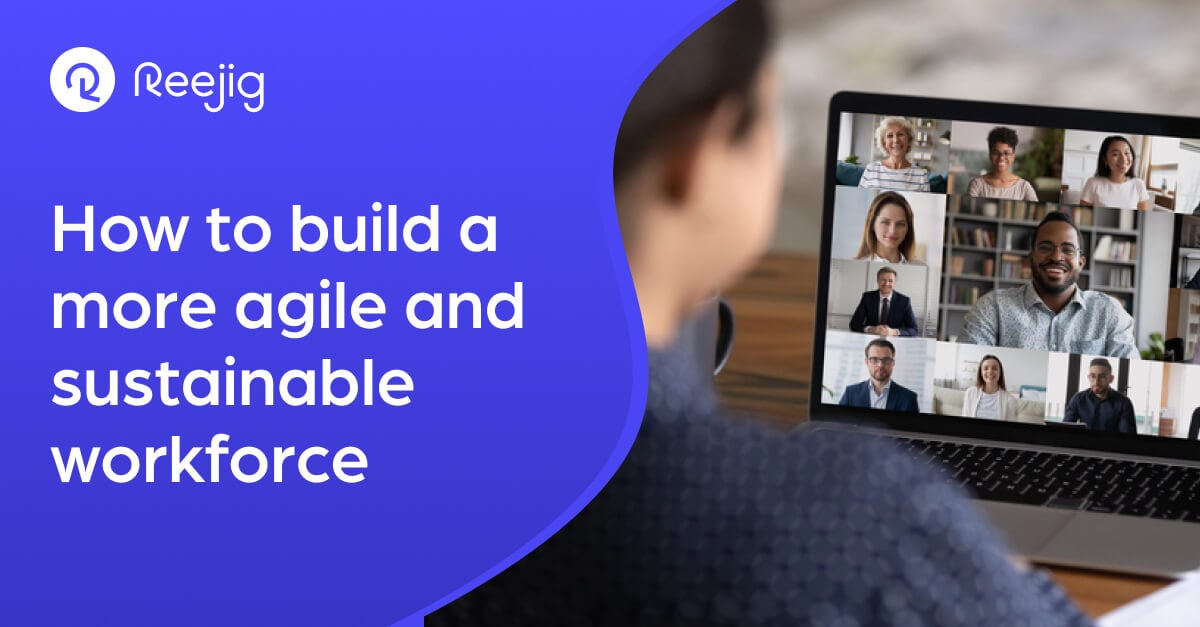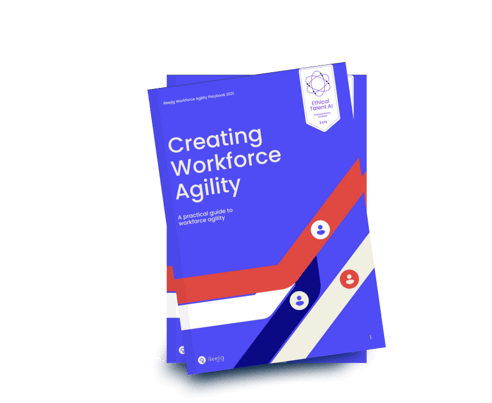How to build a more agile and sustainable workforce
Siobhan Savage
4 mins
Jan 23, 2022

How to build a more agile and sustainable workforce
Blog Post Body
Table of Contents
Talk to a Work Strategist
See the Work Operating System in action and start re-engineering work for AI.
Subscribe to our newsletter
The latest insights on re-engineering work for AI
Skills are the lifeblood of every organization, but getting access to the right ones when you need them is an increasingly difficult challenge. As the world continues to relax pandemic restrictions, workers are looking around for new opportunities and the competition for skills is becoming even fiercer.
A recent global survey done by management consultants at McKinsey found the need to address skills gaps is more urgent than ever, with more than half of organizations saying it’s become a higher priority since the pandemic began. It’s a trend that’s transforming the jobs market, putting the balance of power into the hands of job seekers as they look for better pay and conditions.
This has inspired many employers to look inward, with 69% of organizations reporting an increase in skills-building activity during the pandemic, compared to only 42% who reported they’d increased hiring activities.
While this focus on internal skills is a great start, addressing the talent gap involves more than just providing upskilling programs.
The first step is to understand the current skills within your organization, mapping out what skills you need based on your business strategy and workforce plan.
Getting clear visibility of your in-house skills allows you to match current employees to new roles and career paths, short-term assignments, mentors, and training. Building this picture of what you have and what you need puts you in a position to move quickly and effectively.
What does it mean to be agile
True workforce agility involves a new talent strategy mindset, with a focus on transferable skills and adaptability. It’s about better planning and visibility so that you respond to any situation. This means knowing who your people are and what they’re capable of doing, not just what their job title is.
We’re all picking up professional skills and experience from the moment we leave school. If you pigeonhole people based on their job title, you’re limited to replacing like for like and increasing or decreasing the number of people in your business who are responsible for an agreed set of tasks.
As a starting point on the path to agility, leaders need to focus on the skills they have within their organization right now, assessing whether they’re transferable to other roles and whether they can help deal with existing shortages.
This activity must be data-driven, with timely and comprehensive data on everyone in the business. This will help your organization build a more agile and sustainable workforce, where skills are transferable, and a continuous chain of new opportunities builds brand loyalty among staff.
How to get started
Altering your organization so that it is truly agile is not a straight sprint to the finish line. As the word ‘agile’ suggests, it is an iterative process. It’s a journey that can take time.
Getting started requires an honest assessment of where your organization is on its journey towards agility. There are different stages of maturity – from foundational to leading edge – and it’s critical that organizations fully understand their progress to build an actionable path forward.
To activate workforce agility at any level of maturity, organizations must focus on 3 critical enablers:
- Activate a mobility mindset. Develop tangible policies that incorporate agile principles at every level. This provides a ‘guiding light’ for leaders to drive a genuine mobility mindset that prioritizes employee growth and encourages open thinking about job function and transferable skills
- Build data on the skills makeup of your organization. Go beyond manual skills profiling to build a comprehensive, real-time view of your workforce and the skills they possess. This is what we call an Opportunity Marketplace, which uses Artificial Intelligence to match and align people, skills, and open roles.
- Removing organizational silos. Bring various talent acquisition and management teams together to eliminate data silos and ensure everyone has access to the same information.
Building agility is also about building meaning and purpose in every element of your talent strategy.
We coach our customers to think of their workforce as an ecosystem of different experiences and skills, with specific interests and potential. People want to do good work, but if they don’t have access to a meaningful career, they will become unproductive, unhappy, and may eventually leave.
This is what comes from not being busy and fulfilled. An agile talent strategy allows organizations to more meaningfully understand their people, setting them on a path of continuous professional development that’s good for them and good for your business.
Learn how to build agility directly into your talent strategy
Download the Practical Guide to Workforce Agility to gain the actionable information your team needs to start embedding agility into every part of your business.

Talk to a Work Strategist
See the Work Operating System in action and start re-engineering work for AI.
Subscribe to our newsletter
The latest insights on re-engineering work for AI